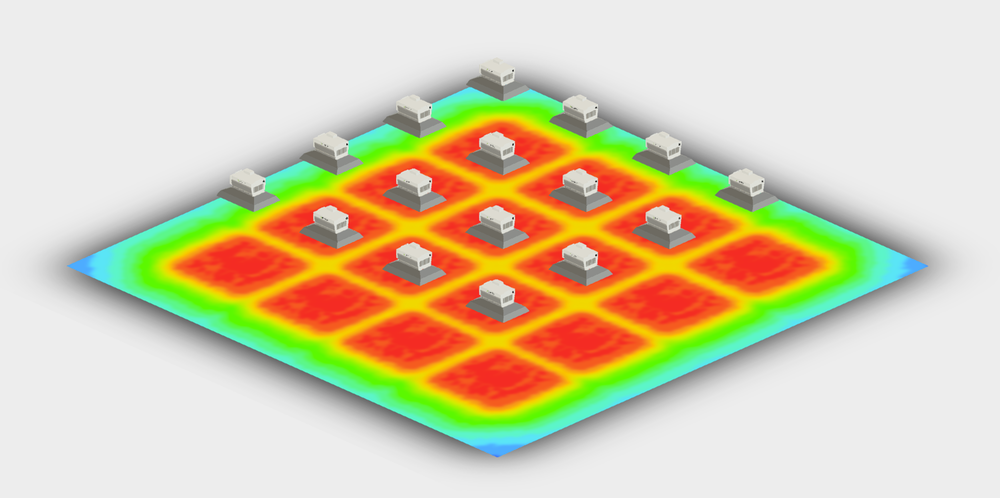Photosynthetic Photon Flux Density (PPFD) is an important factor to consider when determining how an LED grow light will perform in a cultivation facility. Several factors play into PPFD, including the design of the fixture array, fixture height above the canopy, intensity of the fixture, and most importantly, the angular distribution of light exiting the fixture - which largely defines the 'uniformity' of the fixture.
Coefficient of Utilization (CU) is a measure of how much light exiting the fixture will fall on a canopy area of a certain size; CU is an important factor to consider in designing an energy efficient Controlled Environment Agriculture (CEA) facility. CU is expressed as a ratio of the total light emitted by the fixture to the light that falls on an area of canopy of a defined size. It is important to note that the light that does not fall on the canopy directly under the fixture may either be wasted (to walls or floor), or may fall on canopy area adjacent to the fixture, depending on the design of the facility.
The only accurate way to determine CU is by simulation, since each measurement technique previously discussed is not without its limitations. When manufacturers design lights, they often simulate lights with ray tracing simulation tools which use Monte Carlo calculation methods and ray data from LED manufacturers to calculate the light output of a 3D model of the light, accounting for all of the materials in the product, each LED, operating and drive conditions, and geometry of the fixture.

Reflectors were designed with ray tracing techniques, ensuring highly uniform lighting on the canopy
Calculating CU from a simulation is simple; first calculate the entire light output of the fixture, then measure the output incident on various sized planes at different distances from the fixture. The ratio of these values is representative of the percentage of light that hits a plane of a certain size at a certain distance. As you will see, increasing the distance of the plane from the fixture results in a lower coefficient. Shown below are CU values for an LED top light on a 5x5 foot plane at three distances. Adding a reflector significantly increases the CU.
It is important to understand that the light that does not fall on the canopy directly under the fixture is not always wasted. With efficient CEA facility design practices, this light can be reflected off highly reflective walls or will fall on canopy area adjacent to the fixture, depending on the design of the lighting array.
| 1ft distance | 2ft distance | 3ft distance | |
|---|---|---|---|
| LED top light without optics | 0.89 | 0.68 | 0.47 |
| LED top light with reflector | 0.99 | 0.82 | 0.60 |
This table might be easier to understand visually:


Optics are designed to result in highly uniform lighting across large canopy areas, with whole array Coefficient of Utilization (CU) exceeding 0.95, depending on wall reflectivity and array layout.